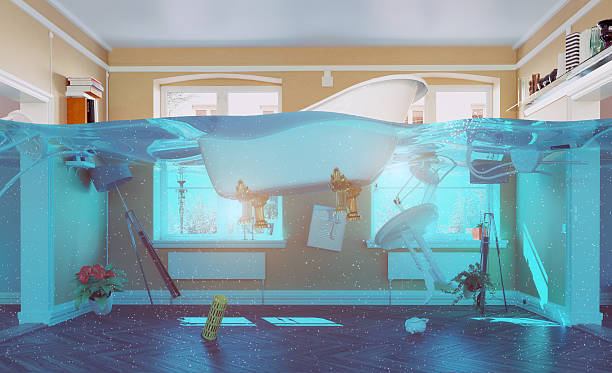Bathroom Leakages as well as Just How to Take Care of Them
Bathroom Leakages as well as Just How to Take Care of Them
Blog Article
The article listed below relating to How to Repair and Prevent Bathroom Water Damage? is highly remarkable. Check it out yourself and see what you think of it.

Water damage typically takes place in the restroom due to the water made use of daily. Sometimes, the damages could be a little mold and mildew from the shower. Other times, it's large damages on your floor. Whatever it is, it is constantly excellent to know the cause and also prevent it before it takes place.
This guide will undergo several of the common root causes of water damage in the washroom. We will likewise analyze what you can do to stop these causes from damaging your shower room. Allow's dive in.
These are the common reasons you would have water damage in your washrooms and how you can find them:
Excess Wetness
It's trendy to have that lengthy shower and sprinkle water while you hem and haw and also imitate you're performing, but often these acts can create water damage to your bathroom.
Splashing water around can cause water to visit edges and also create mold and mildews. Watch how you spread excess wetness around, as well as when you do it, clean it up to stop damages.
Splits in your wall tiles
Restroom wall tiles have been specifically created for that function. They secure the wall surface from dampness from individuals taking showers. Nonetheless, they are not undestroyable.
Sometimes, your bathroom wall tiles split and also permit some dampness to permeate right into the wall surface. This can possibly damage the wall surface if you do not take any type of activity. If you observe a fracture on your wall tiles, fix it immediately. Don't wait until it damages your wall surface.
Overruning commodes as well as sinks
As people, in some cases we make errors that could cause some water damage in the bathroom. As an example, leaving your sink faucet on might trigger overflowing and damages to various other parts of the shower room with wetness.
Likewise, a faulty toilet can create overflowing. For example, a broken commode deal with or various other parts of the cistern. When this happens, it can harm the floor.
As soon as you see an overruning sink or bathroom, call a plumbing to help manage it right away.
Burst or Dripping Pipelines
There are many pipelines bring water to different parts of your bathroom. Some pipelines take water to the toilet, the sink, the faucets, the shower, as well as numerous various other locations. They crisscross the small location of the shower room.
Every so often, these pipes can get corroded as well as burst. Various other times, human action can trigger them to leak. When this takes place, you'll discover water in the corners of your shower room or on the wall.
To detect this, watch out for gurgling wall surfaces, molds, or mildew. Call an expert emergency plumbing technician to fix this when it occurs.
Roof covering Leakages
Sometimes, the trouble of water damage to the restroom could not come from the washroom. For instance, a roof covering leak can cause damages to the restroom ceiling. You can detect the damage done by checking out the water stains on the ceiling.
If you discover water stains on your ceiling, inspect the roof covering to see if it's damaged. After that, call a professional to assist address the issue.
Verdict
Water damage to your bathroom can be frustrating. However, you can handle it if you protect against some of the reasons stated in this overview. Call a specialist emergency plumbing technician if you notice any type of extreme damage.
How to Repair a Water-Damaged Wall in the Bathroom
All you need to know to repair bathroom wall water damage – from identifying the water source to finishing the repair professionally. If you don’t act quickly to resolve a water damage problem, you could find that it develops into a mold issue and/or cause structural damage to your home. Follow this guide to repair your bathroom before it's too late.
All you need to know to repair bathroom wall water damage
Water damage is a common household problem, and one that, if left unrepaired, can quickly lead to structural problems and health issues. The two most likely rooms where water damage may occur is the bathroom and the kitchen – where water is used often and there is high humidity.
What is water damage?
It is easy to think of water damage as caused by a flood or leaking tap or burst water pipe. However, when water damage is assessed, there are three main categories into which water falls (as classified by the American National Standards Institute). These categories are defined as:
Category 1 Water – ‘Clear Water’
This is sanitary water. There is usually no major threat to health by washing with this water, drinking it, or inhaling if it is streaming. Most water that enters your home will be category 1 water, while most water leaving your home will be either category 2 or 3 water. It may also come from melting snow, rainwater and water tanks.
Damage caused by this type of water can usually be repaired or restored, though this doesn’t mean that there are no potential health issues.
Category 2 Water – ‘Grey Water’
This is contaminated water – sometimes considerably so – and will cause illness if consumed or if it comes into contact with your skin. Water damage in this category is often caused by overflows from toilet bowls, and damage to washing machines and dishwashers. While damaged items might still be repaired or restored after damage by grey water, it is more difficult and more expensive to do so.
If the water damage in your home has been caused by grey water, it is advisable to have repairs made by professionals.
Over time, grey water will deteriorate and become black water.
Category 3 Water – ‘Black Water’
Category 3 water, also known as black water, is highly contaminated and a great risk to health. This may contain raw sewage, heavy metals, and other toxic substances. It will smell terrible.
If this is the water that has caused damage in your bathroom, do not touch it. Stop the water flowing if possible, seal the room and call the experts: it really isn’t worth the risk of ill health and disease that could be fatal. It is very unlikely that items can be repaired or restored if they have been damaged by black water.
https://www.porterscleaning.com/blog/how-to-repair-a-water-damaged-wall-in-the-bathroom/

I ran across that write up about How to Repair and Prevent Bathroom Water Damage? when surfing the internet. Sharing is caring. You just don't know, you will be doing someone a favor. Thanks a lot for taking the time to read it.
Schedule Service Now Report this page